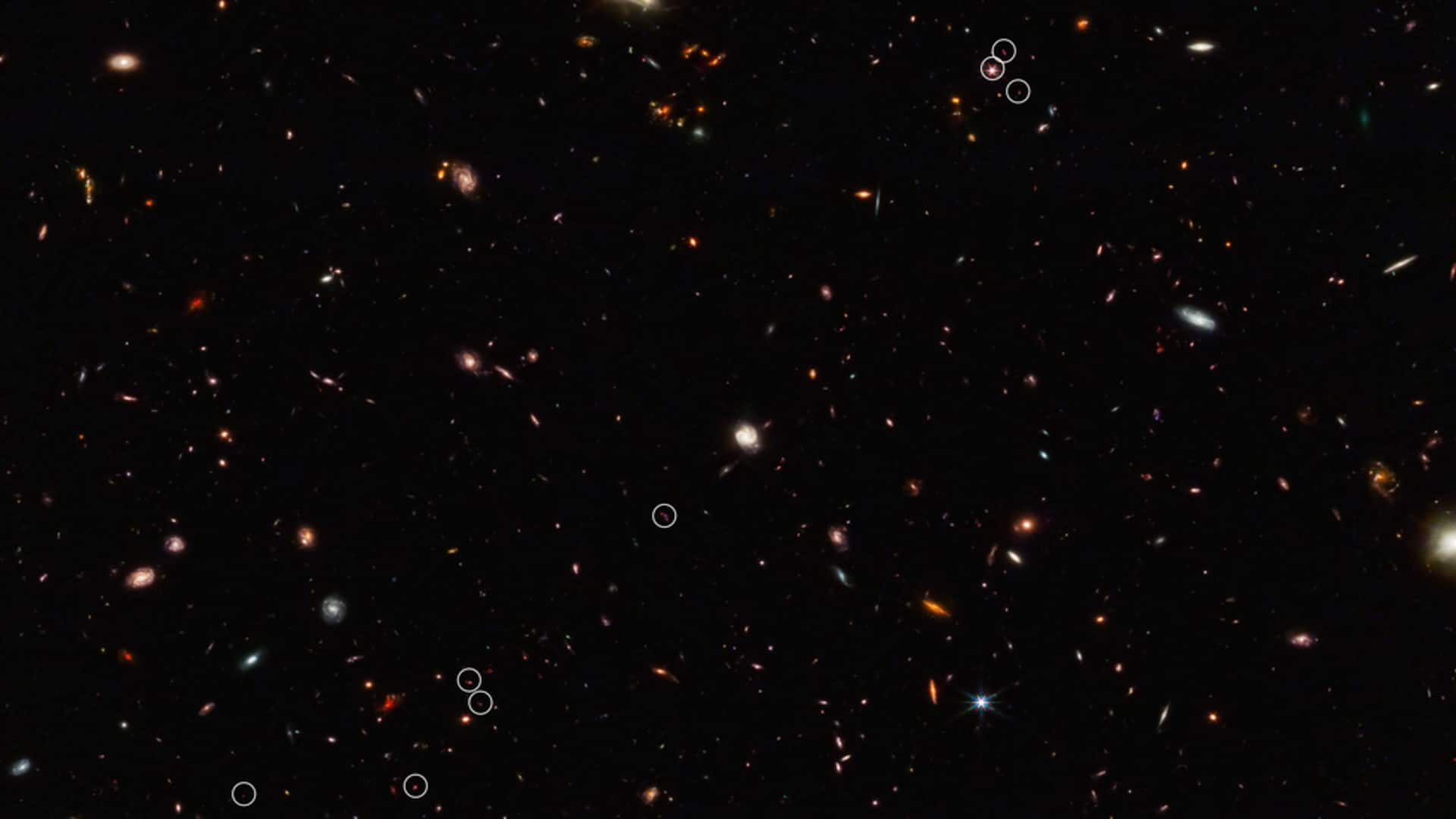
NASA's James Webb telescope discovers earliest galaxies of 'cosmic web'
What's the story
NASA's James Webb Space Telescope has detected some of the earliest galaxies in the cosmos. Galaxies in the universe aren't randomly dispersed. Rather, they form clusters and are linked via huge filamentary structures with massive interlaying gaps. This arrangement is called "cosmic web" by NASA. Webb has now spotted "a thread-like arrangement of 10 galaxies" that formed 830 million years after the Big Bang.
Context
Why does this story matter?
Webb has been crucial to astronomers in several ways. Built to see in infrared light, which humans cannot perceive, the space telescope enhances our understanding of the universe in ways its predecessors have not been equipped to do. Given its unique capabilities, we are bound to see more significant discoveries in the coming years.
Finding
'One of the earliest filamentary structures found in distant quasar'
The newly-identified threadlike filament structure ranges about three million light-years long, according to NASA. Interestingly, this filament is supported by a bright and distant quasar, which is a galaxy that contains an active, supermassive black hole at its center. "This is one of the earliest filamentary structures that people have ever found associated with a distant quasar," said Feige Wang from University of Arizona.
Information
Researchers think the filament will evolve into a galaxy cluster
Researchers think that this recently-spotted filament will eventually evolve to form a massive cluster of galaxies, like the famous Coma Cluster, the nearest rich cluster of galaxies known to contain thousands of systems.
Study
The observations were part of investigation into earliest black holes
The latest Webb findings were part of a study seeking to investigate the surroundings of the earliest black holes. This program aims to conduct observations of 25 quasars that formed within the first billion years following the Big Bang. This era in cosmic history is called the Epoch of Reionization, a time when the first stars and galaxies started to form.
Insights
Webb revealed about effect of black holes on star formation
Additionally, the team is excited about another Webb finding. It provided the "best evidence" of how early supermassive black holes could govern star formation in galaxies. "While supermassive black holes accrete matter, they also can power tremendous outflows of material," said NASA. "These winds can extend far beyond the black hole itself, on a galactic scale," and can significantly impact how stars are formed.
Official words
The telescope is providing crucial insights into the early universe
"Strong winds from black holes can suppress the formation of stars in the host galaxy," said Jinyi Yang, from University of Arizona. "Such winds have been observed in the nearby universe but have never been directly observed in the Epoch of Reionization. The scale of the wind is related to the structure of the quasar." Webb's observations prove such winds existed in early universe.